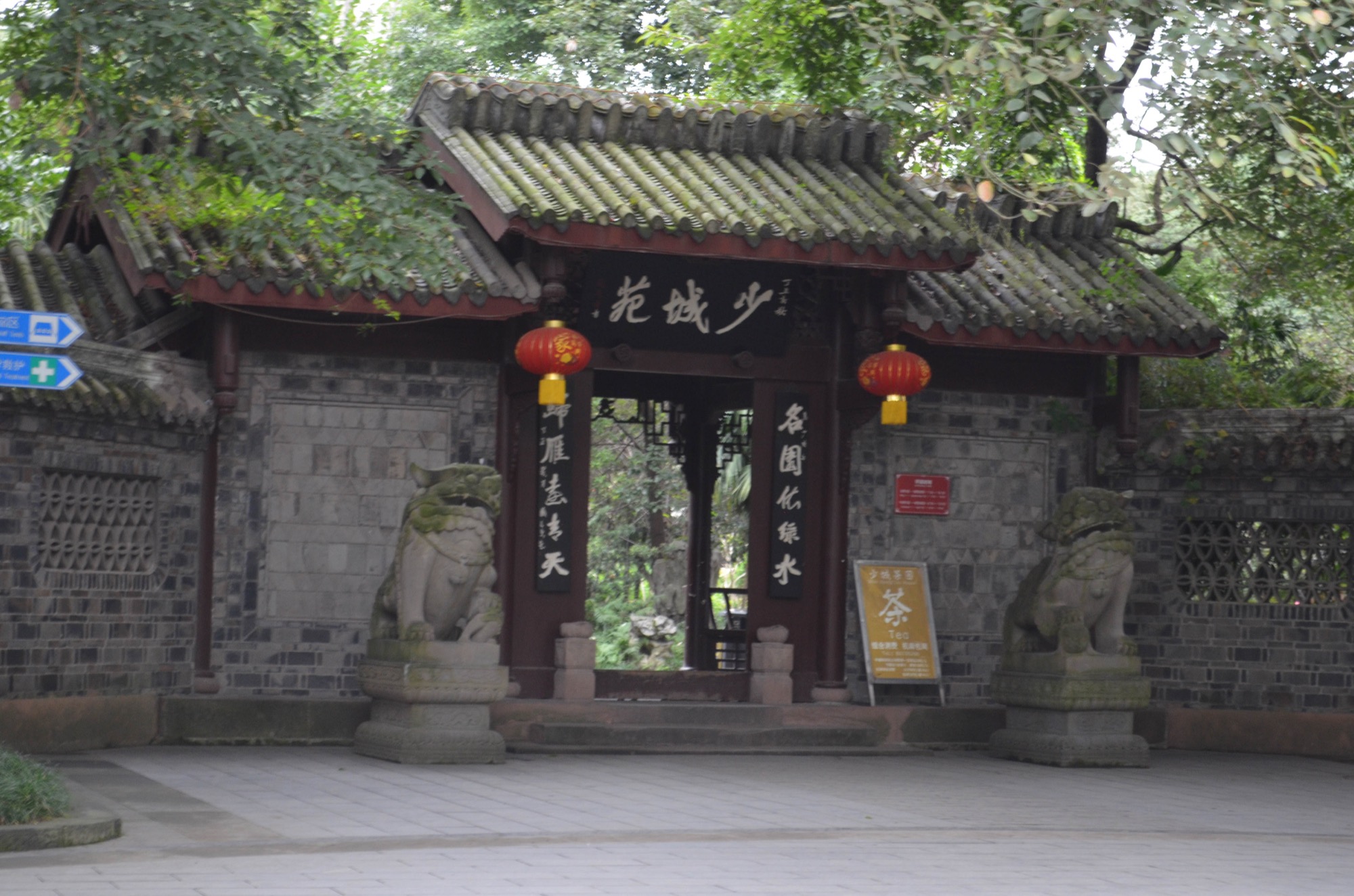Artifacts at the Jinsha Site Museum
Among the most prized artifacts discovered at the Jinsha Site are a gold foil pendant of the sun surrounded by phoenixes, a golden mask, and a large collection of jade and bronze artifacts.
Among the most prized artifacts discovered at the Jinsha Site are a gold foil pendant of the sun surrounded by phoenixes, a golden mask, and a large collection of jade and bronze artifacts.

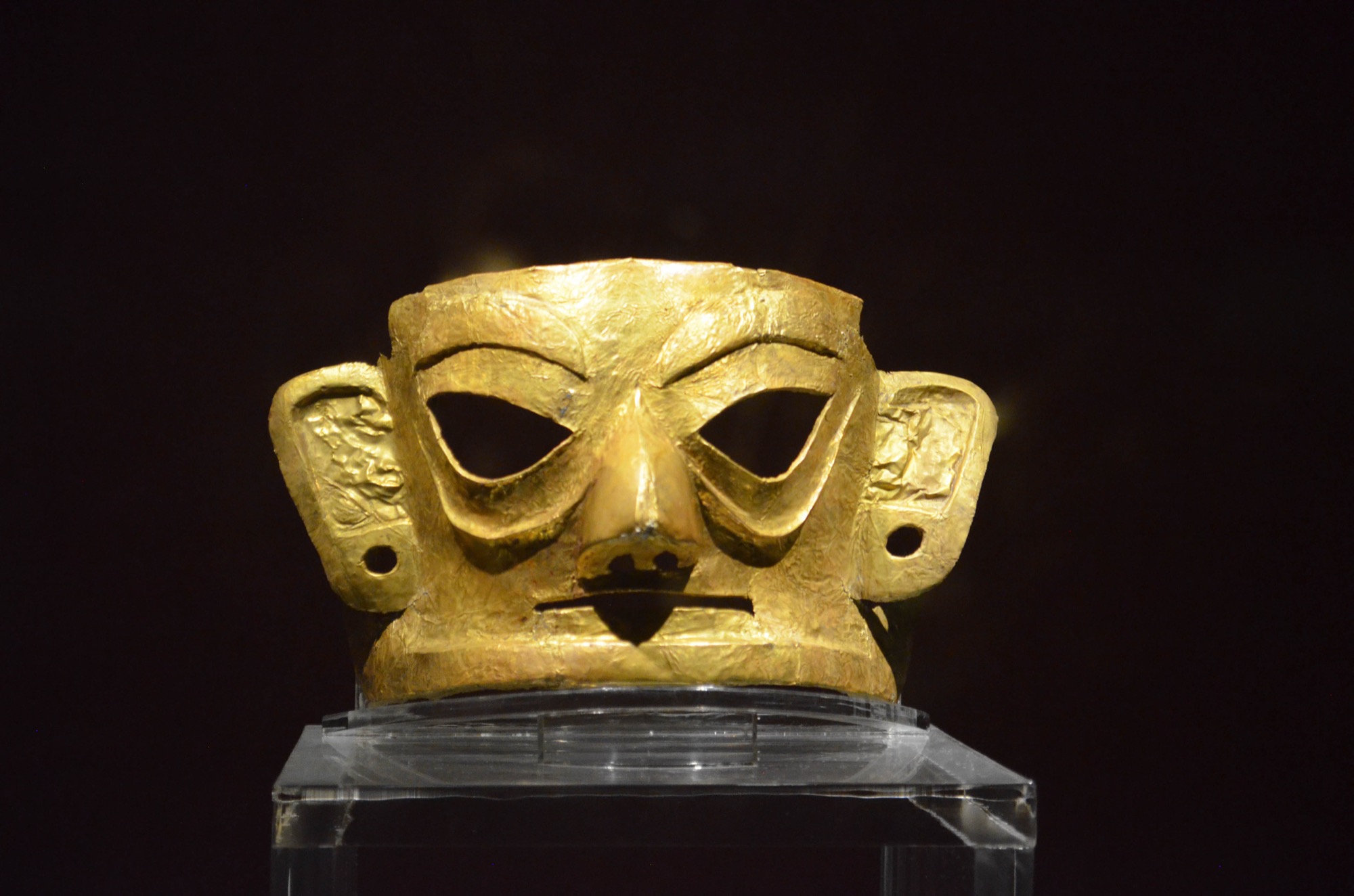

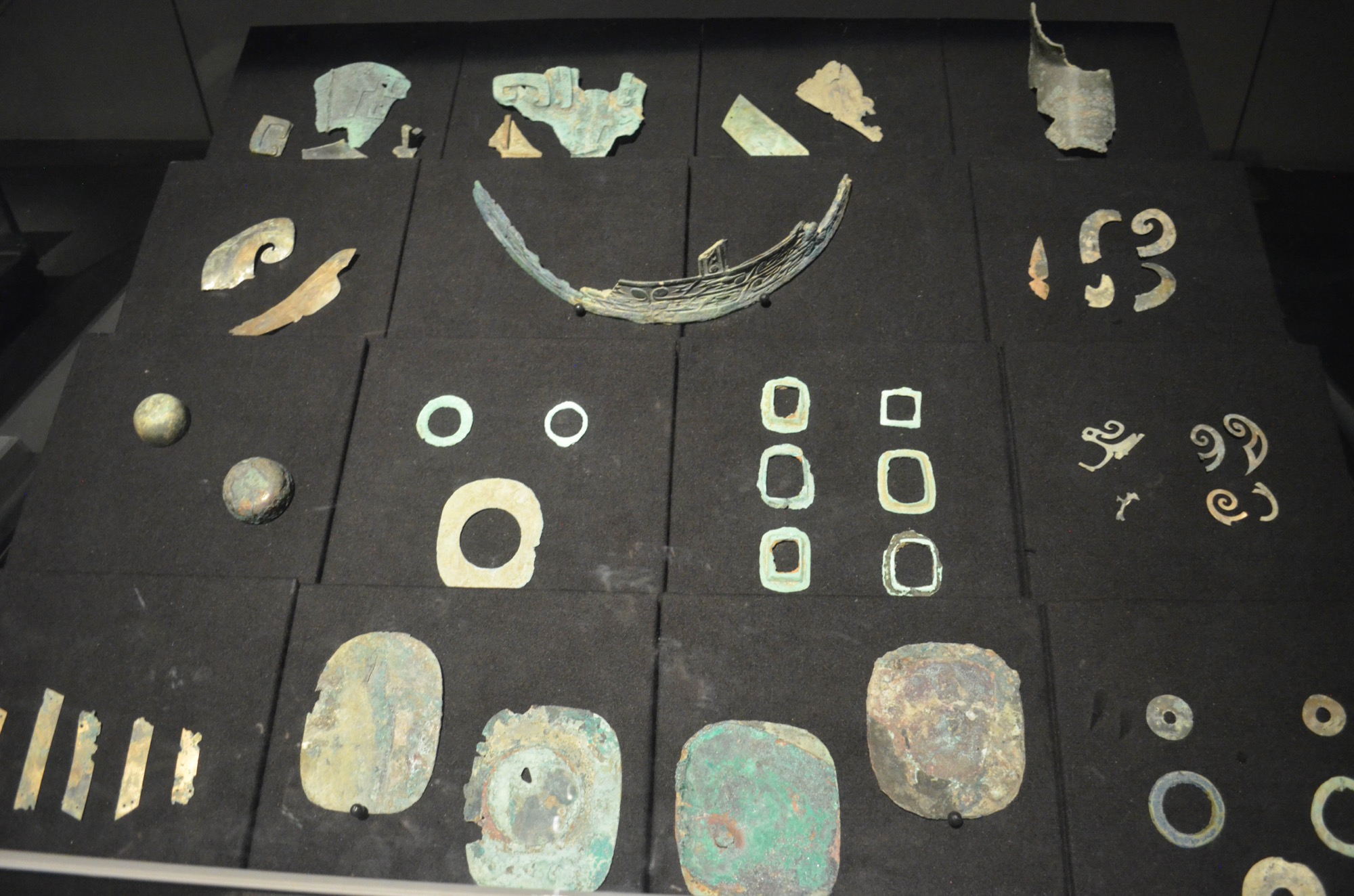


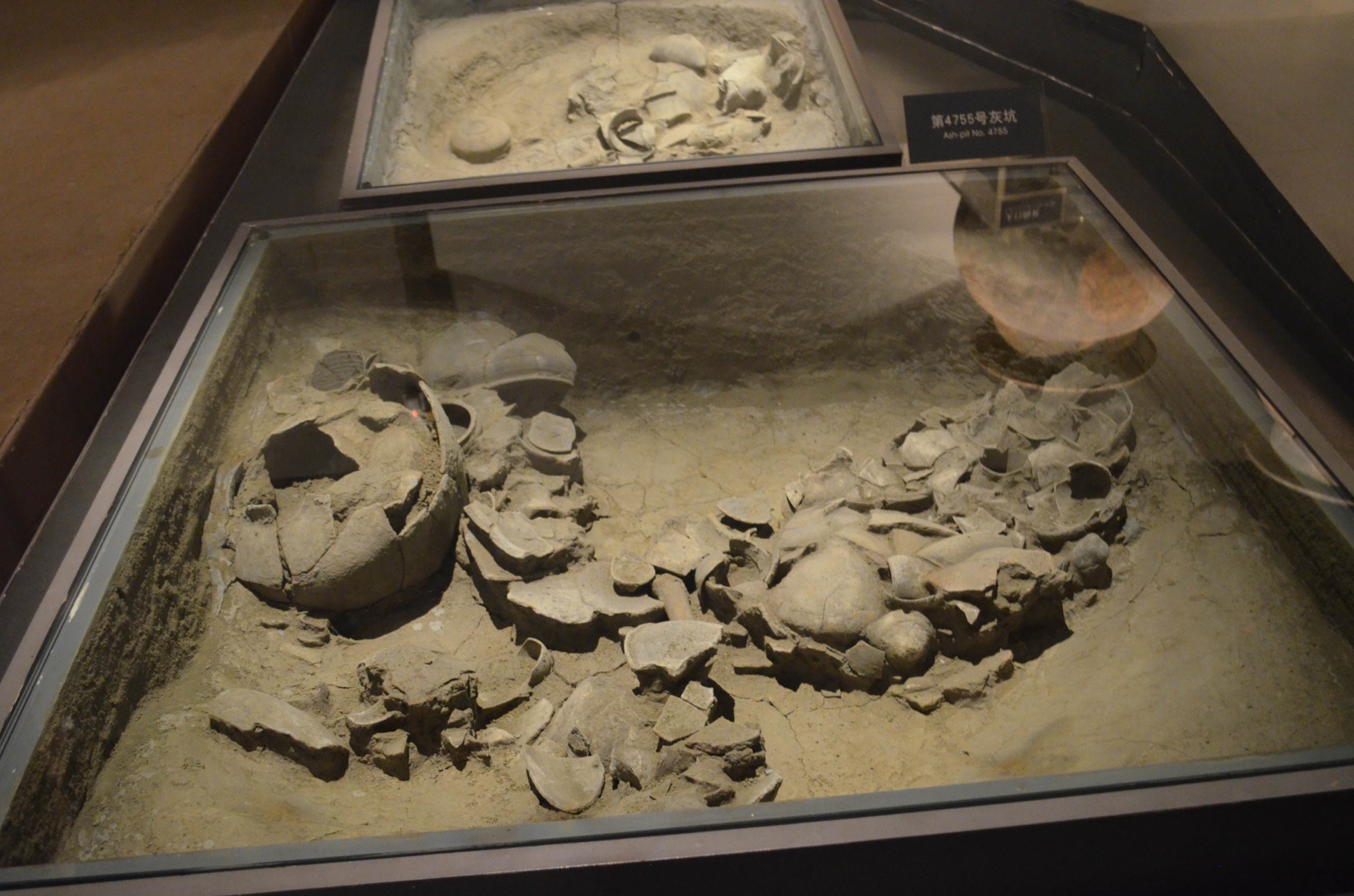

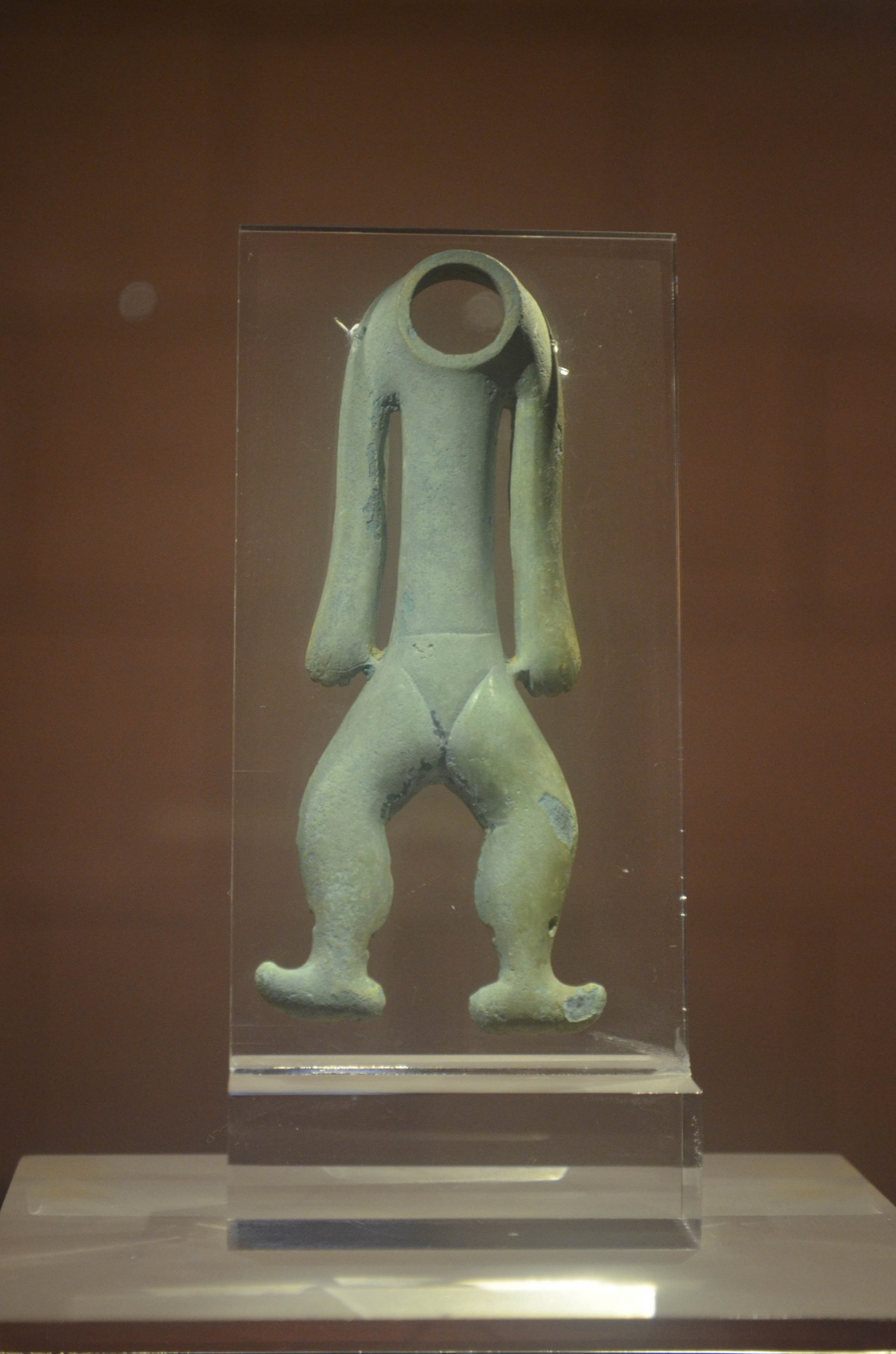
Surrounding the museum buildings at the Jinsha Site are beautiful gardens with meandering pathways that are very peaceful and inviting. There are majestic old ginkgo trees, stands of bamboo, and many large colorful hibiscus trees that were all in bloom.



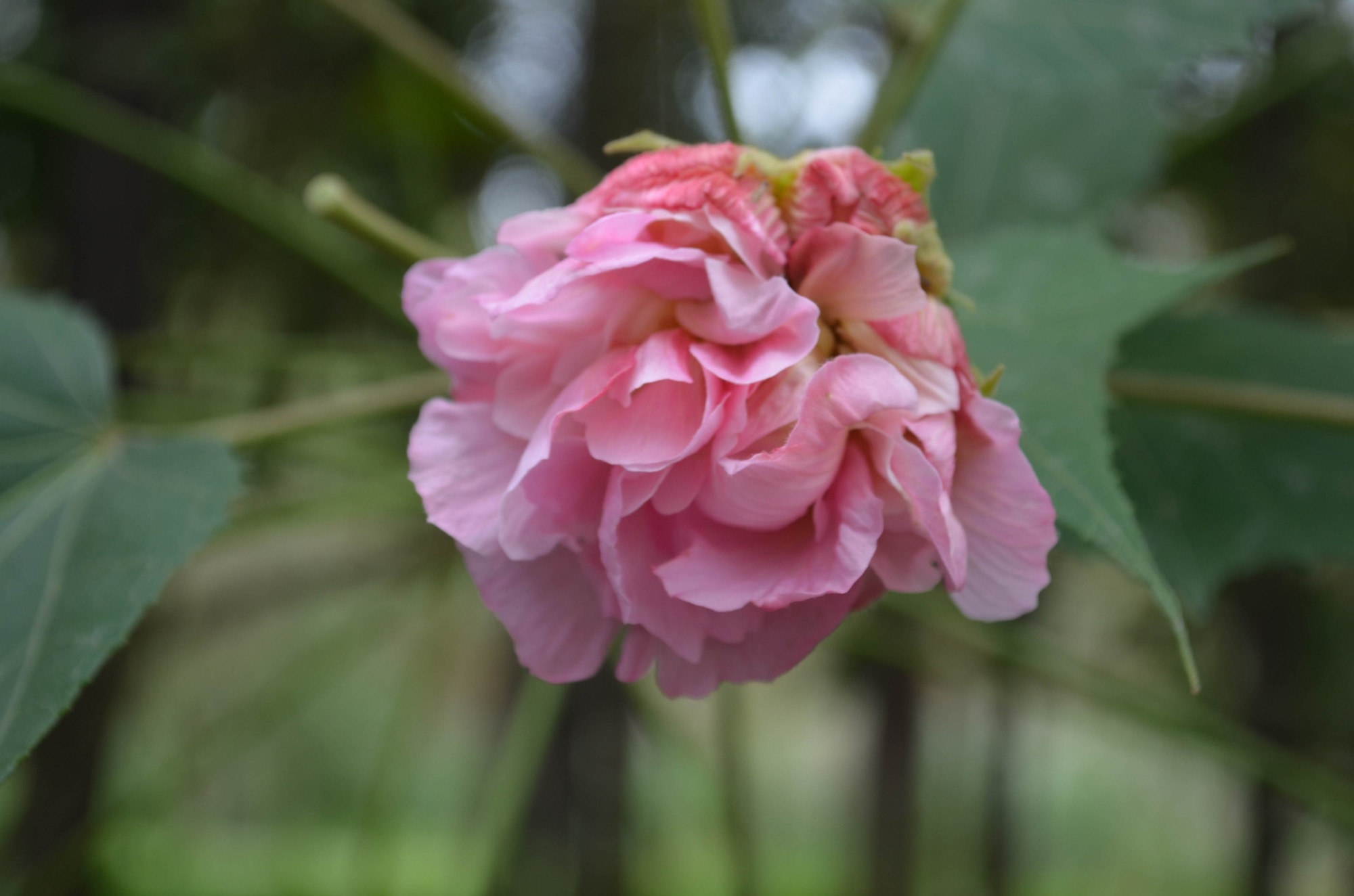
Although giant pandas are classified as carnivores, 99% of their diet consists of bamboo. Because bamboo provides limited energy, the average panda eats 20 to 30 pounds of bamboo shoots per day which passes rapidly through their digestive tract causing them to expel fecal matter up to 40 times per day.
Pandas will occasionally eat small rodents, fish, insects, and birds and in captivity they are often given honey, eggs, yams, bananas, oranges, and nutritional biscuits.



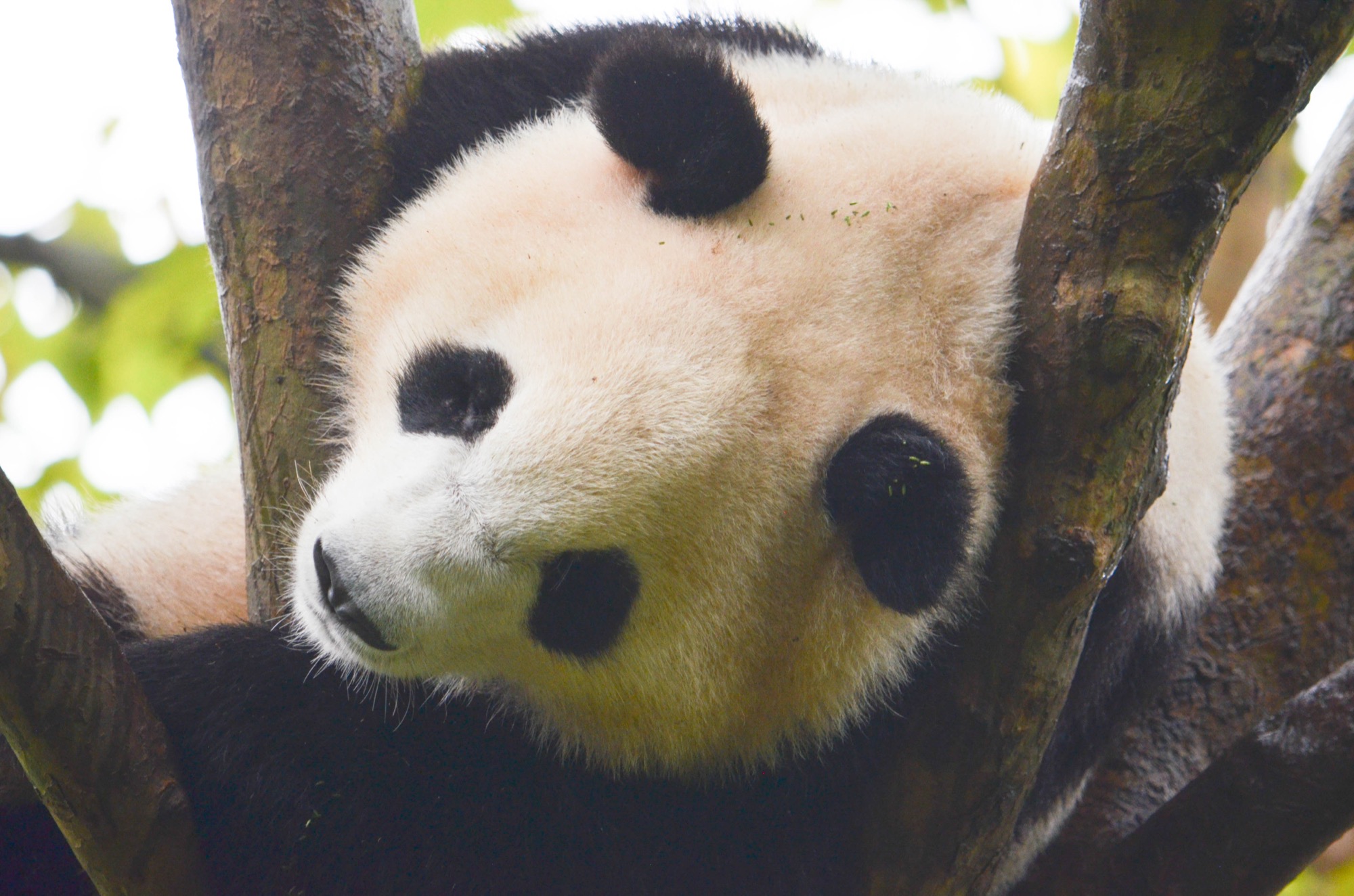

On average, giant pandas live for 20 years in the wild and about 30 years in captivity. Full grown pandas are usually four to five feet tall and weigh around 300 pounds.
Pandas tend to be loners and secrete a waxy scent marker that they rub onto things with their tail in order to mark their territory. Although pandas do not hibernate, they have been known to use caves or hollow trees for shelter in very cold weather.
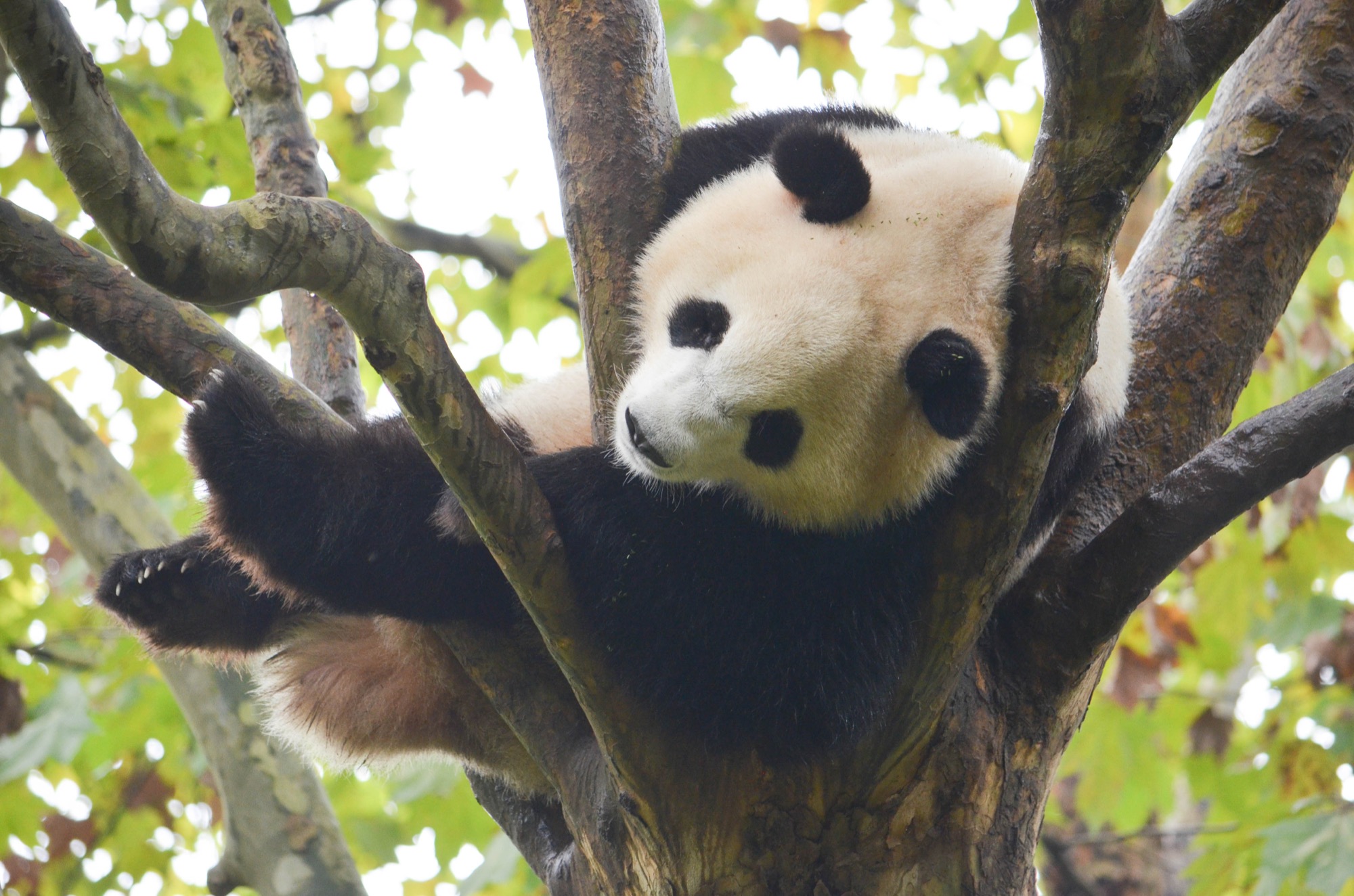
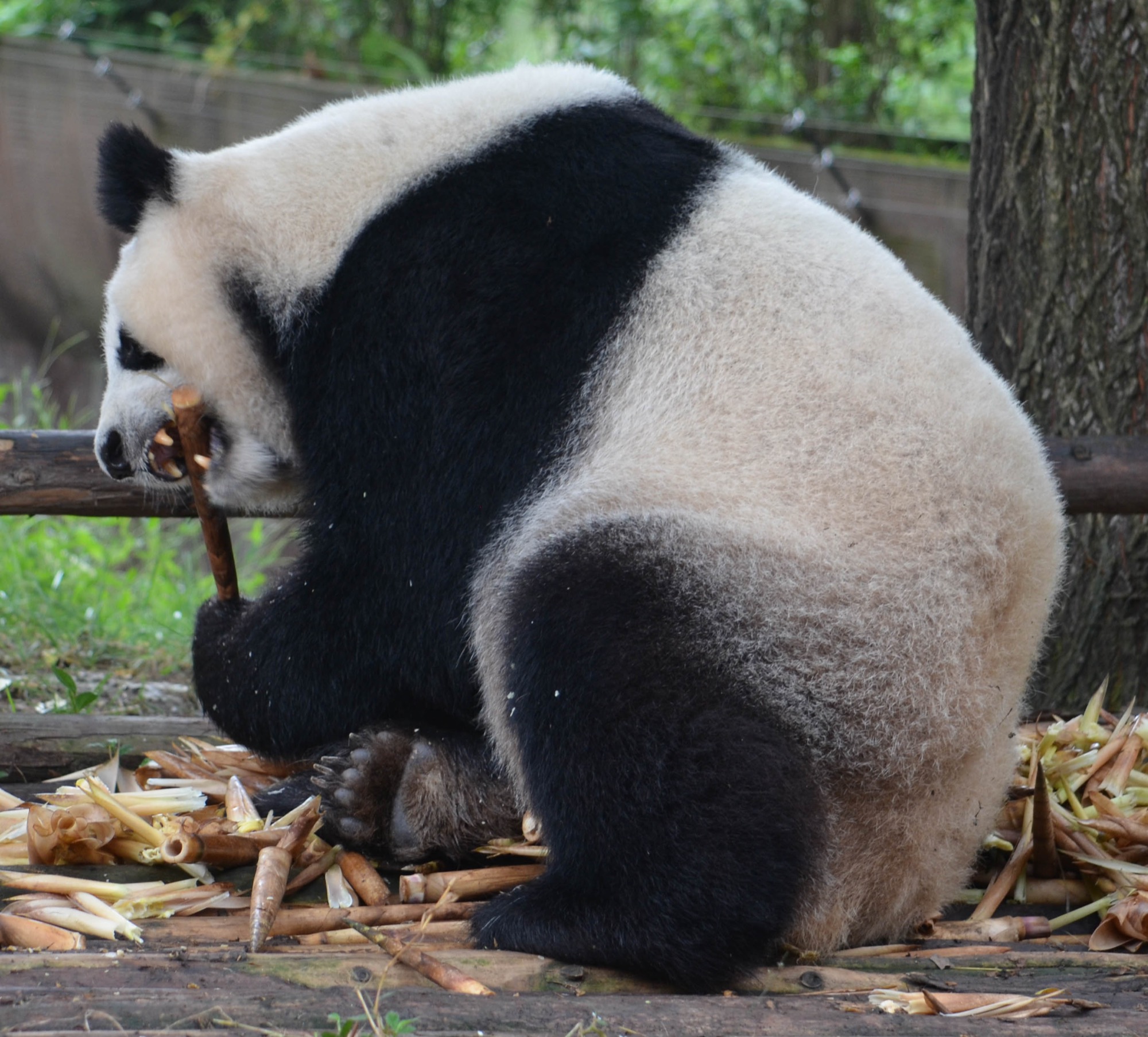

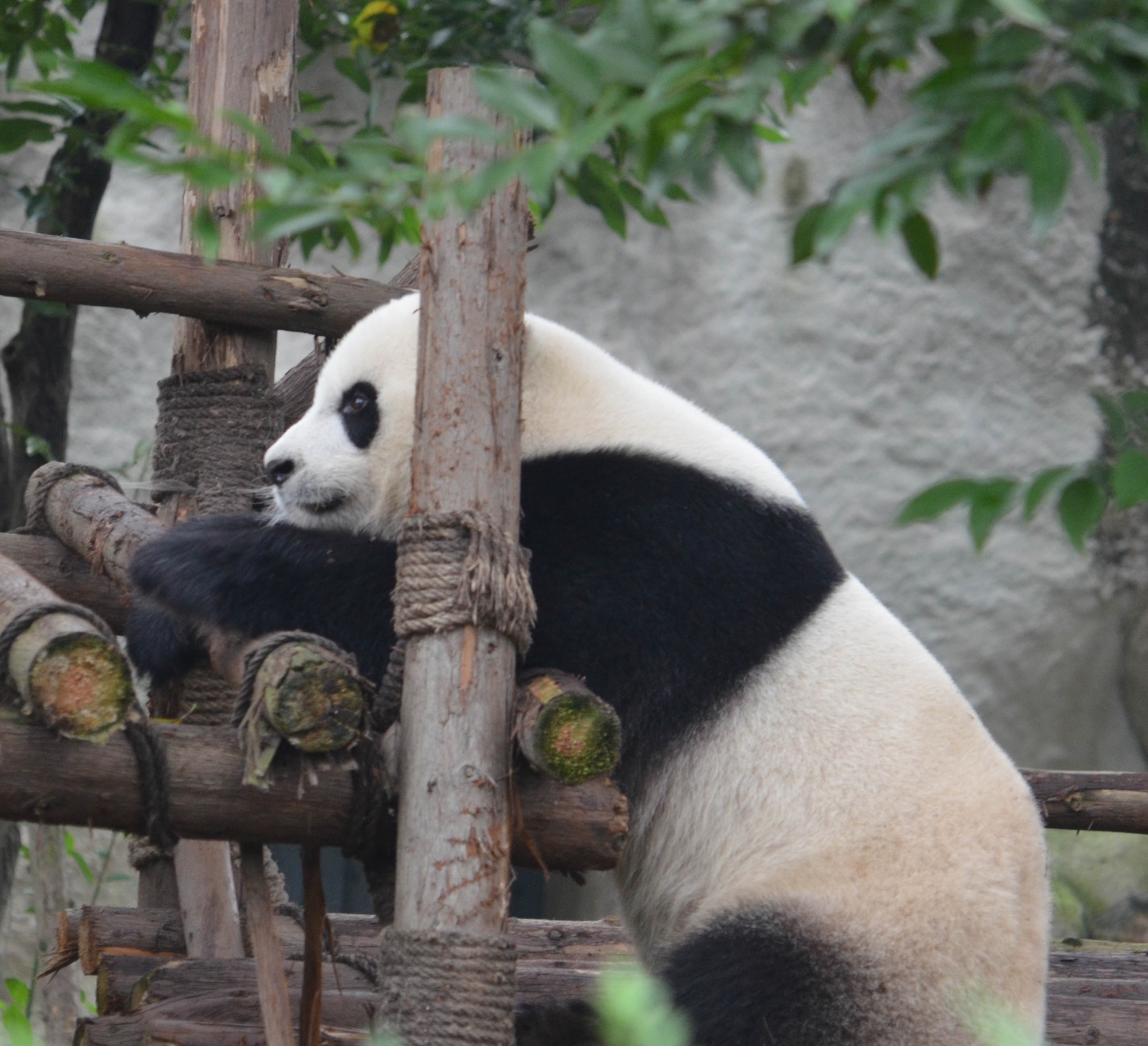

Baby pandas are pink, toothless, and blind when they are first born. At birth pandas weigh about 3 to 5 ounces and are proportionally the smallest infant of any mammal.
After two weeks, the cub's fur will begin to turn grey and at one month the fur will be black and white. At two and a half to three months, the cubs will begin to crawl.
Although mother's milk is their primary diet for the first year, the cubs can eat small amounts of bamboo at about six months.
Cubs generally stay with their mother until they are 18 months old.

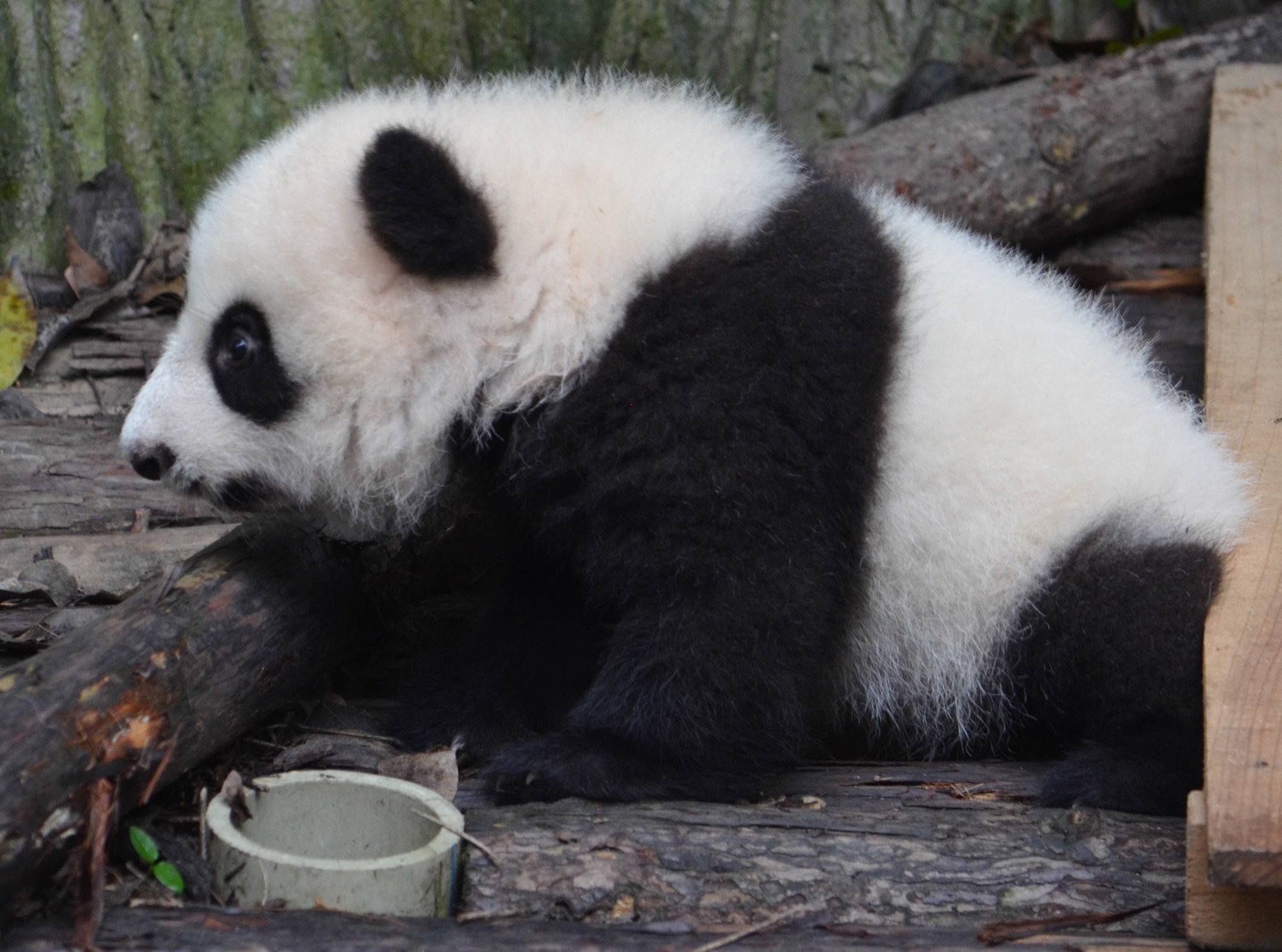
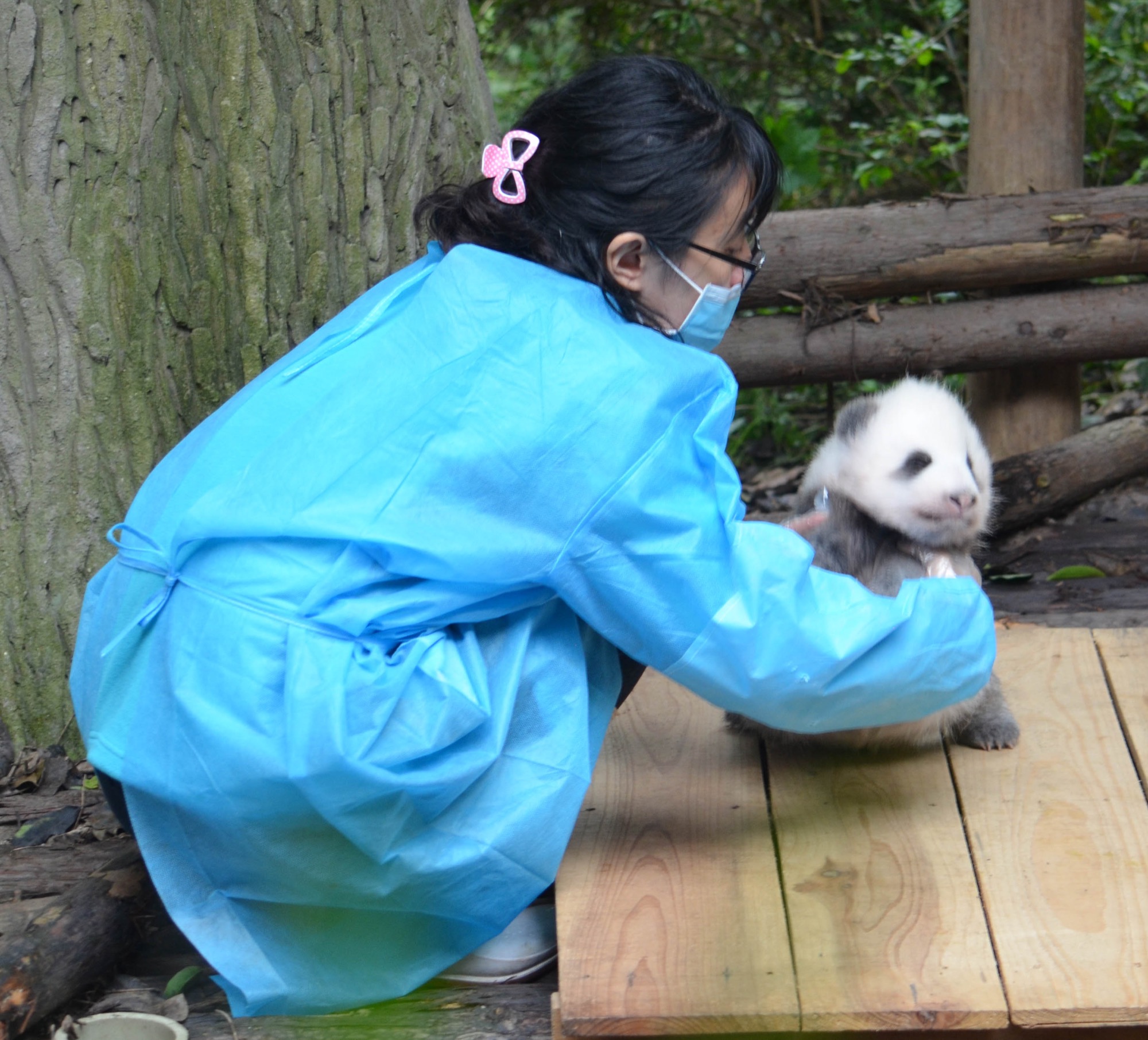
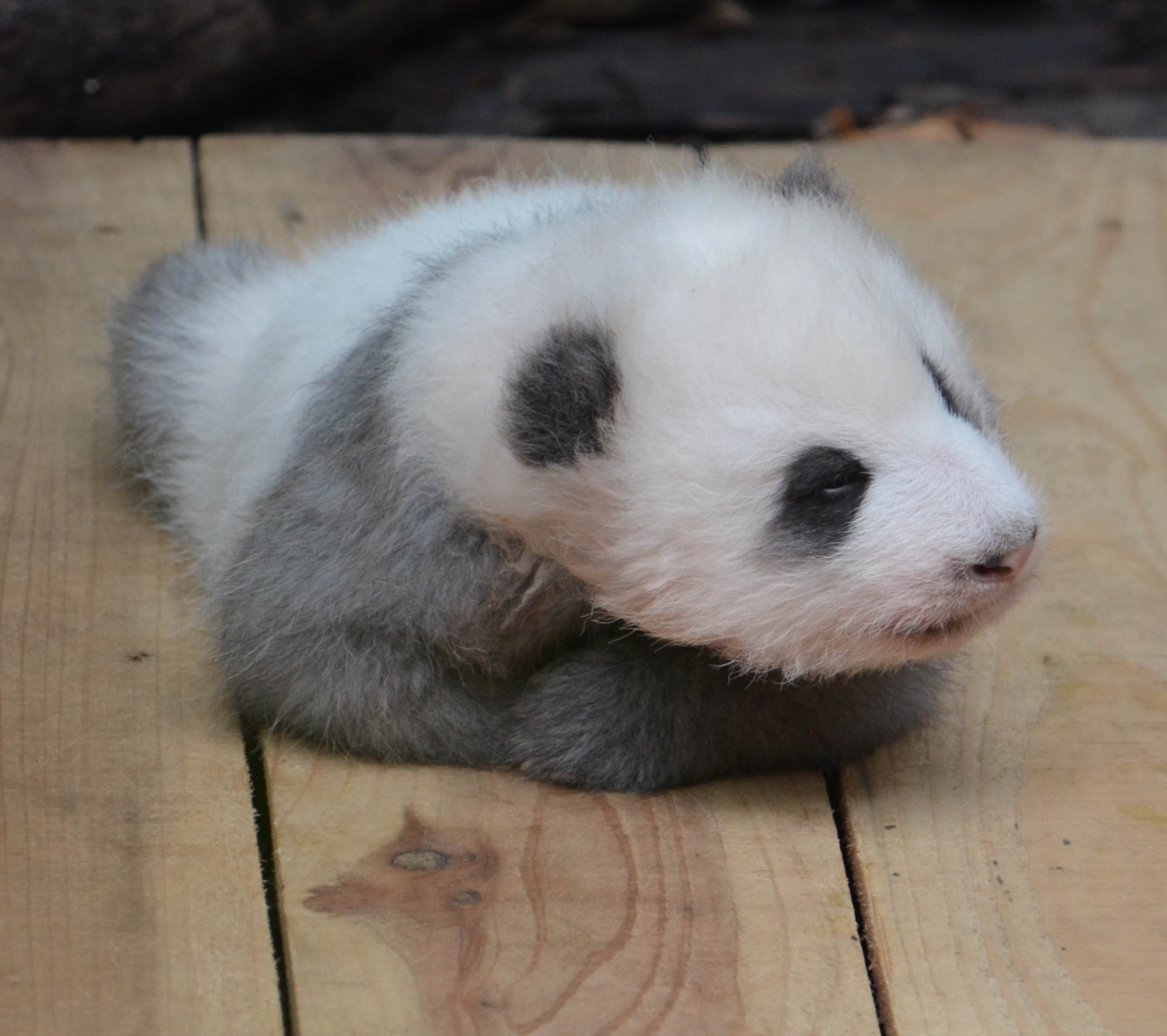




Pandas are well suited for their diet of bamboo. Their molars are larger than any other carnivore and their stomach is covered with very thick mucus to protect them from bamboo splinters.
In addition, pandas have five fingers and a thumb like appendage on each hand so that they can easily grasp and hold the bamboo while eating.
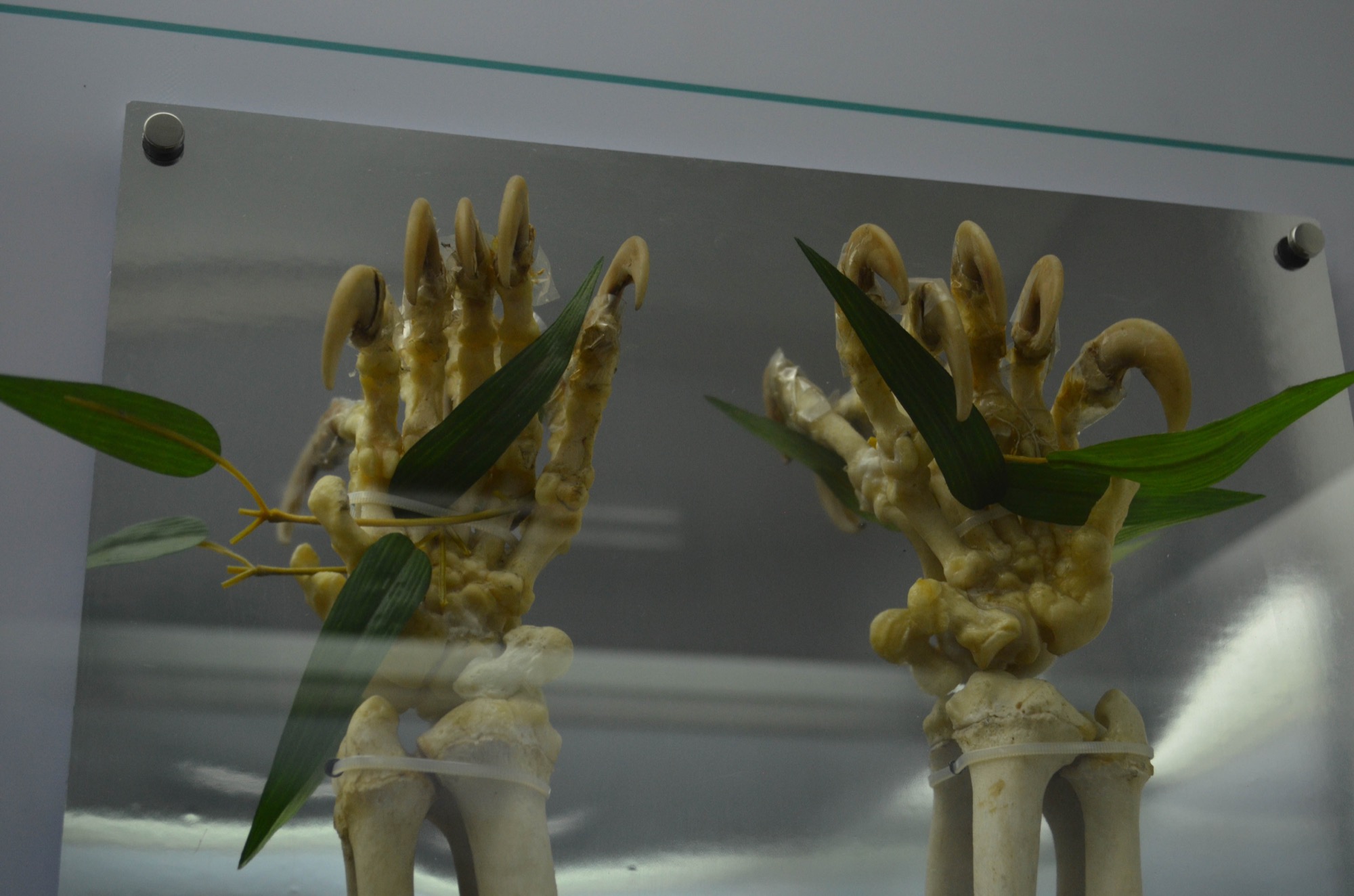

We noticed some opportunistic red-billed leiothrix, also known as the Pekin Robin or the Pekin Nightingale, borrowing food from the red panda's food bowls. There were also a couple of peacocks hanging out in the giant panda enclosure and some black swans on the pond.

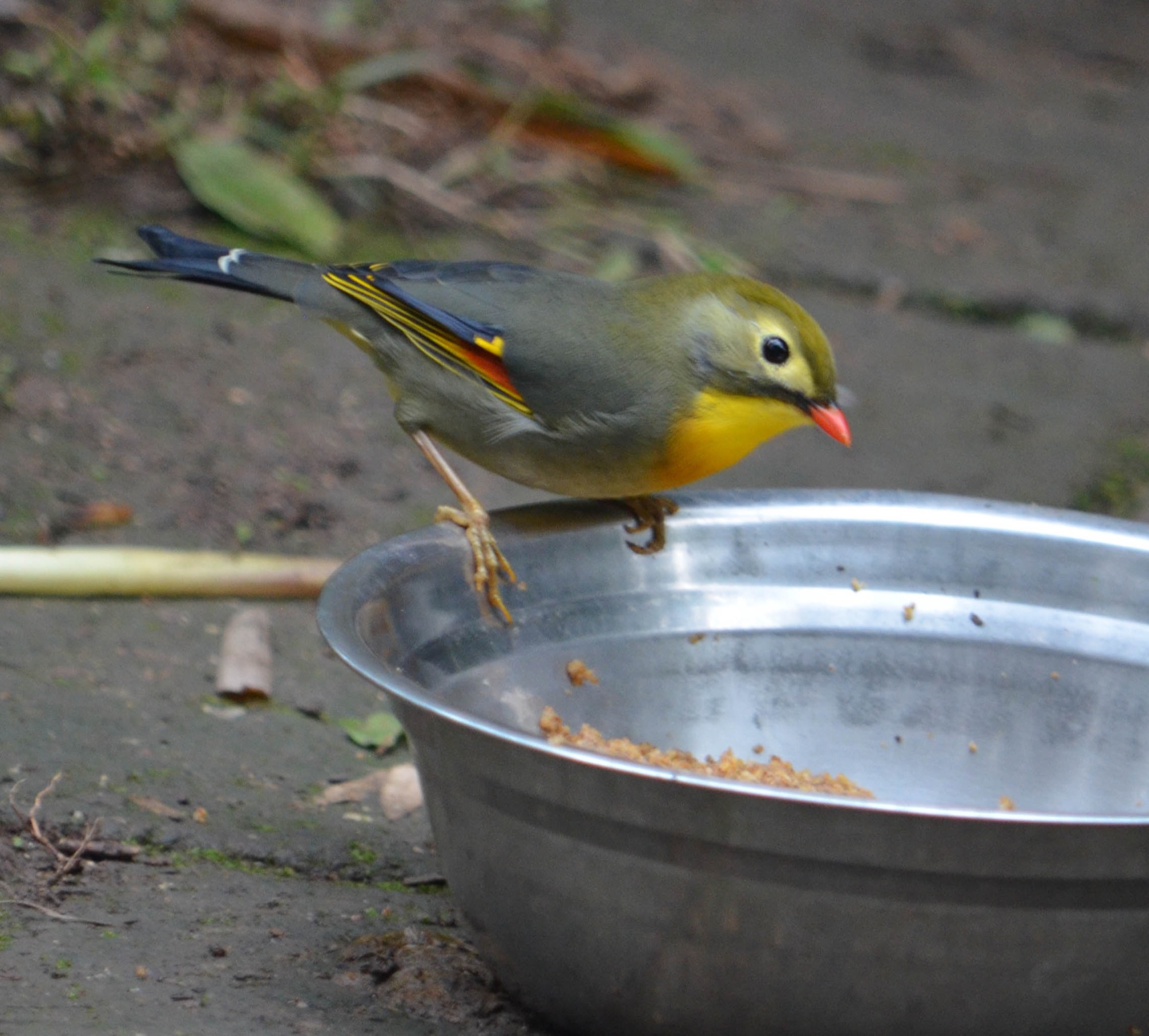


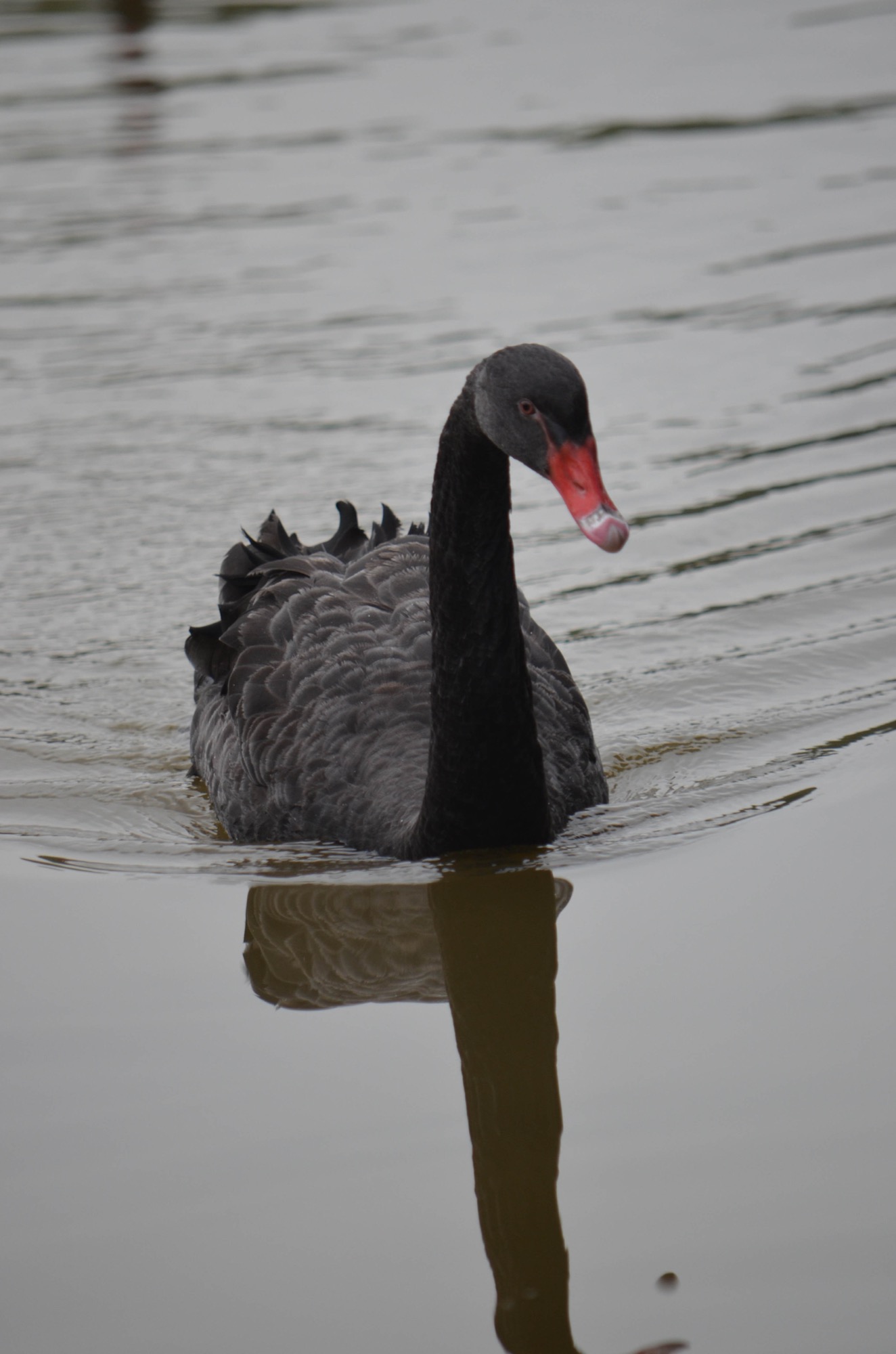
Red pandas are slightly larger than a house cat and they waddle when they walk because their front legs are slightly shorter than their back legs.
The red panda's diet consists mainly of bamboo, but it will also eat birds, eggs, and insects.
Red pandas are excellent climbers and spend a great deal of time in trees. They generally sleep in trees with their legs dangling between the branches. If it is cold, the panda uses its bushy tail as a blanket that it wraps around its body.
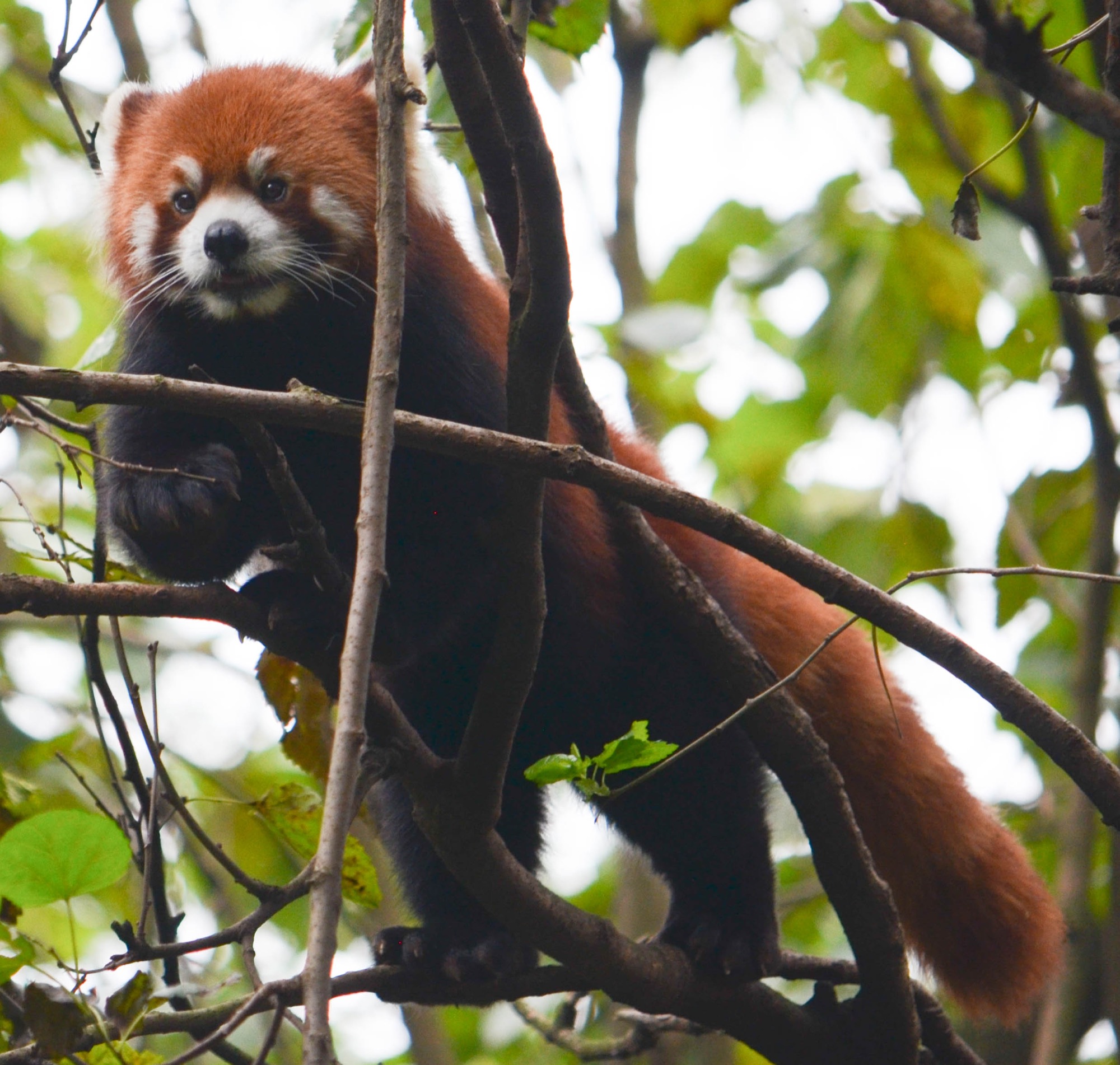





Check out this video of the pandas at the Chengdu Panda Breeding Center as they go about their daily antics.
The People's Park is a large 28 acre park located in central Chengdu. The park, which is a major gathering place for people of all ages, has a large lake, an old tea house, several gardens, including a bonsai garden, some small shops and street vendors, and many walking paths that wind through the park.

